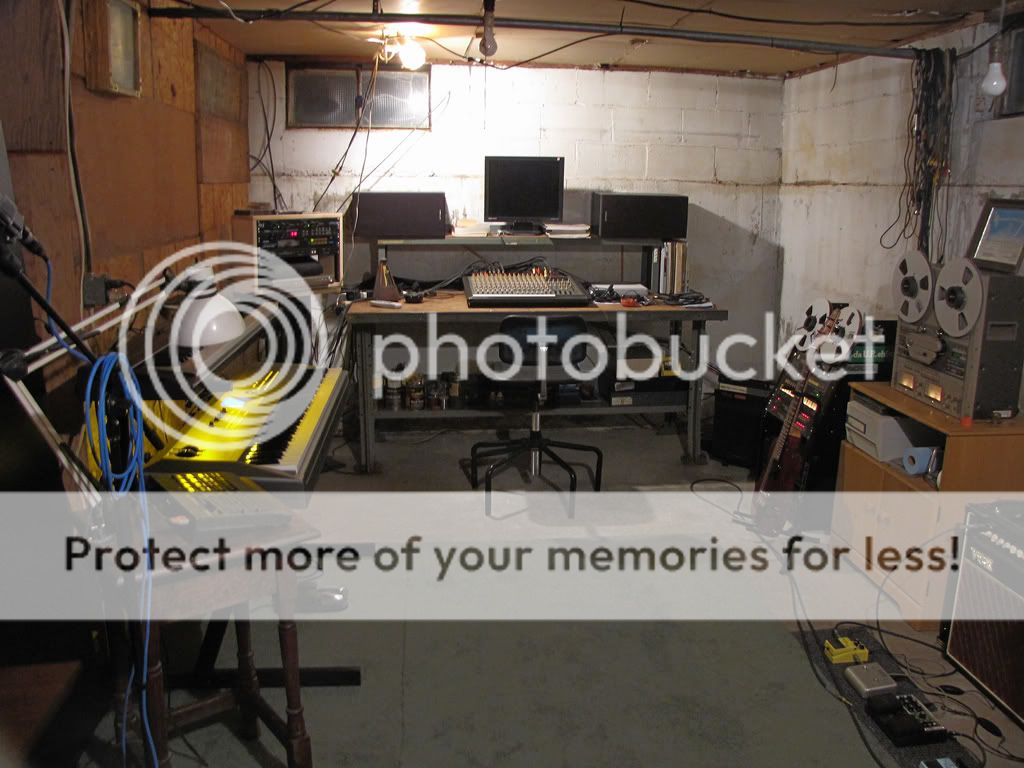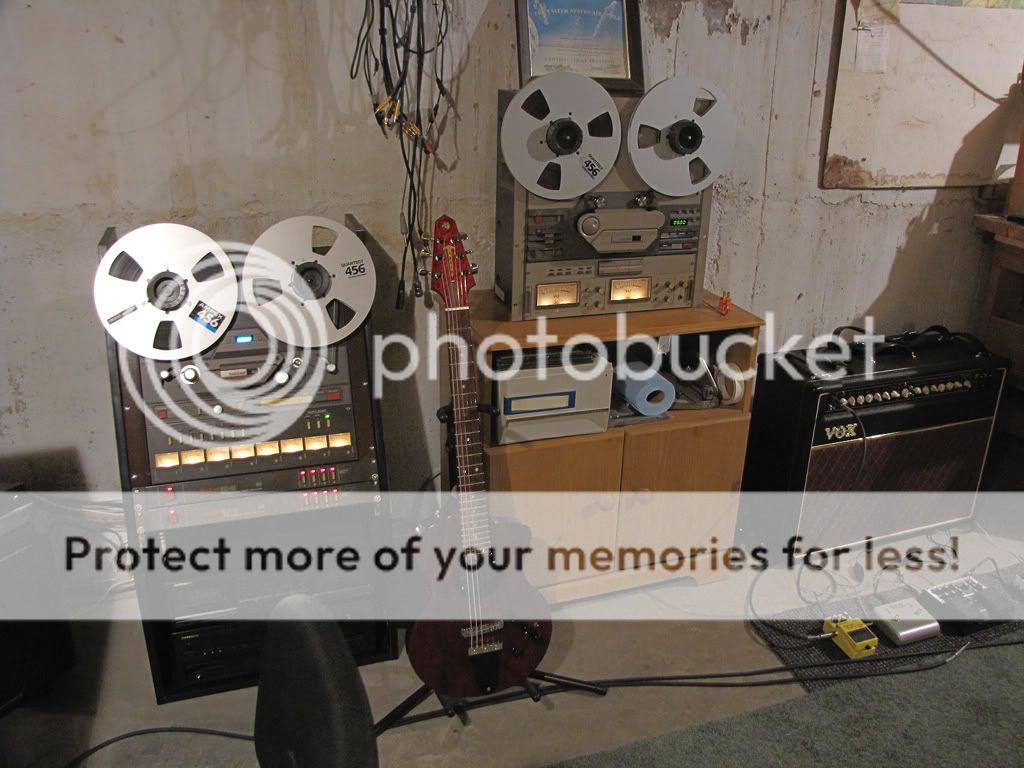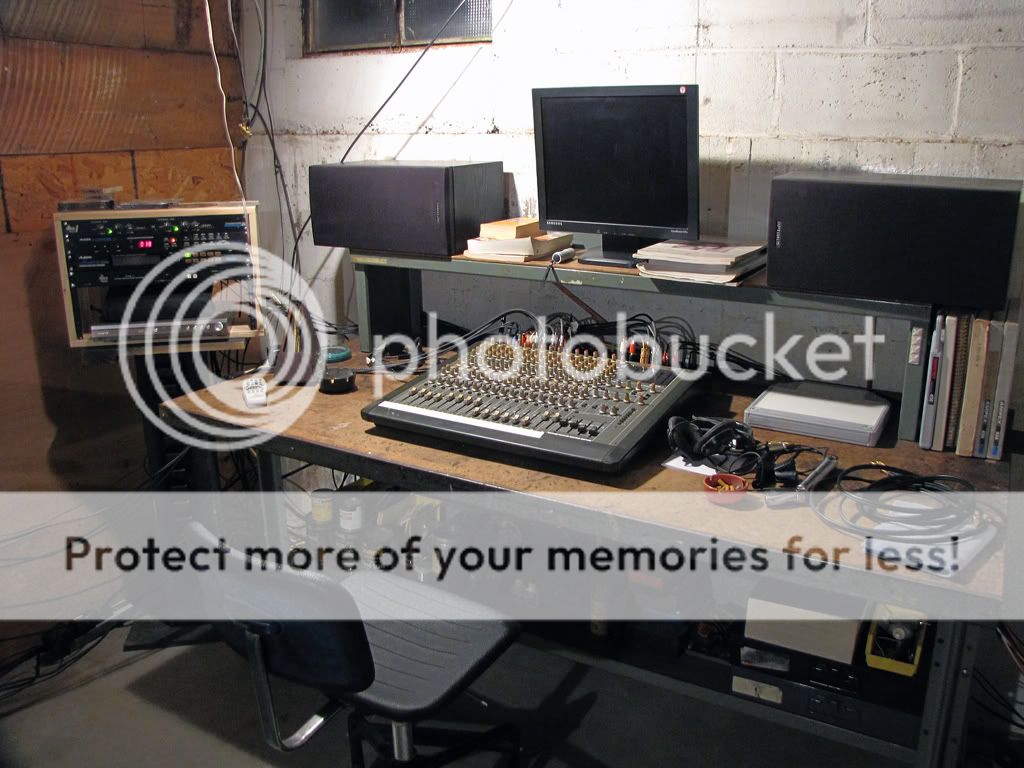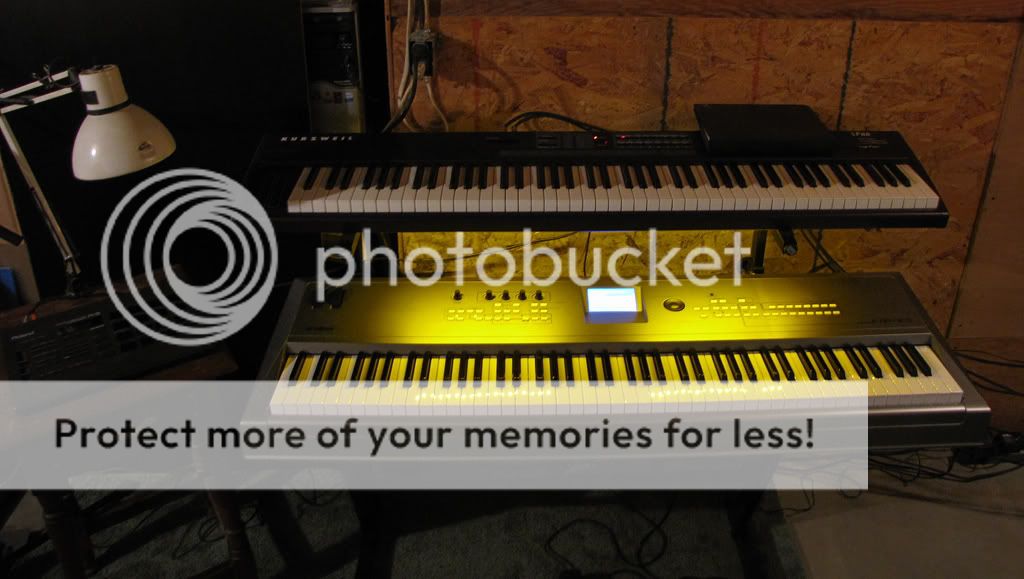M1Fanatic
Digital whaaa?
The room below used to be my workshop. I've built so much in there I've forgotten half of what it was already. I used it to finish one room in the basement that I've already posted photos of, but it was way too small for the gear and recording.
After two weeks of cleaning, throwing out stuff I just thought I better save and never used, a little re-arranging in a different part of the basement, I have a 10'x20' room. The ceiling is only 7' and it's going to get about 2" lower after the sub-floor is laid.
In the latter part of July, all of this will be moved once again so I can stud out the foundation walls and build the floor. In the mean time, since the room is far from treated, I can fool around and just have some fun before doing any serious recording again. In the months to come before starting to build, I'll be studying up on acoustic treating and find out how little I can get away with before taking a second morgage on the house.
It's not nearly as live sounding since the gear was moved in, but it has serious problems in the midrange and bass with the way it is now. Probably HF problems too, but I just can't tell.
Anyway, it's better than being cramped up in a 12x14 room no matter how good it sounded, but I have a long way to go.




After two weeks of cleaning, throwing out stuff I just thought I better save and never used, a little re-arranging in a different part of the basement, I have a 10'x20' room. The ceiling is only 7' and it's going to get about 2" lower after the sub-floor is laid.
In the latter part of July, all of this will be moved once again so I can stud out the foundation walls and build the floor. In the mean time, since the room is far from treated, I can fool around and just have some fun before doing any serious recording again. In the months to come before starting to build, I'll be studying up on acoustic treating and find out how little I can get away with before taking a second morgage on the house.
It's not nearly as live sounding since the gear was moved in, but it has serious problems in the midrange and bass with the way it is now. Probably HF problems too, but I just can't tell.
Anyway, it's better than being cramped up in a 12x14 room no matter how good it sounded, but I have a long way to go.




